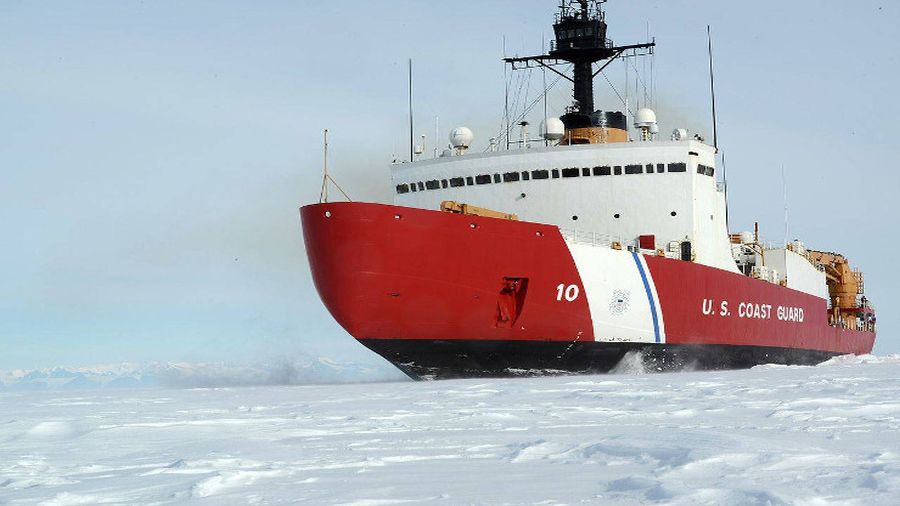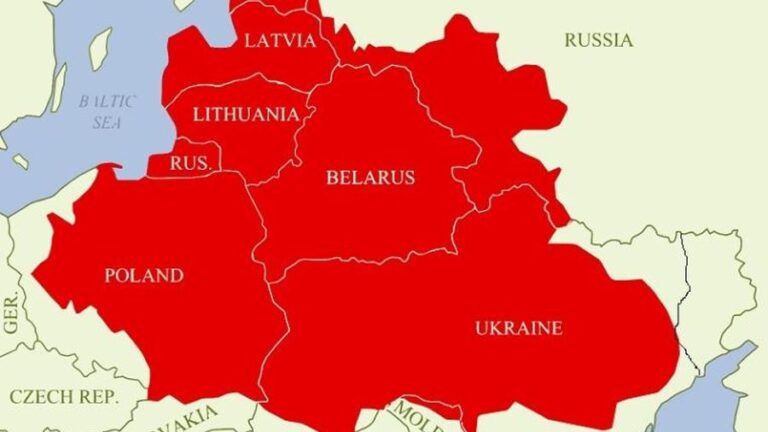Asian and NATO Countries Get Actively Engaged in the “Battle for the Arctic”
During the Cold War, Washington and Moscow fought hard for dominance in the Arctic. But then these tensions subsided in the 1990s, a period of “rapprochement between the West and Russia”. The Arctic Council was even created, bringing the states of the region together and allowing them to coordinate their policies. After that, for a while, the Arctic was of secondary importance to the US after the Middle East and the Indo-Pacific.
However, melting ice, which opened up new transport routes and access to the region’s richest natural resources, in particular unexplored reserves of oil, gas, rare metals, and large quantities of fish, have turned the Arctic region into an active zone of competition and rivalry. And, in addition to the Nordic states, the United States and NATO, even Asian countries, in particular China, Japan, India, and South Korea, have joined the “battle for the Arctic”, seeing significant advantages in using a shorter and cheaper transport route to Europe in addition to resource potential. Other Asian BRICS and SCO countries have also shown interest in cooperating with Russia in the Arctic, demonstrating the strategic nature of these intentions.
Tokyo’s desire to step up its battle for the Arctic has long been reported in the Japanese media. Japan is now actively developing research on meteorological observations and forecasts, environmental protection and the “improvement” of international law in the Arctic. It is clearly hoping, among the countries not territorially part of the region, to gain unrestricted access to the exploitation and utilization of the “Arctic’s benefits”. Especially the promising route linking Europe and Asia along Russia’s northern coast, which is already used by container ships and tankers to transport liquefied natural gas (LNG) from the gas fields on the Yamal peninsula to both Europe and Asia.
Beijing has also declared itself a “near-Arctic country” and has formulated its own Arctic policy, justifying its interest in the region in part by the fact that the melting Arctic ice could flood many Chinese shores and displace some 20 million people. According to China’s vision of the future, a “Polar Silk Road” is to run through the still ice-bound expanses, with an infrastructure and a legal regime being put in place for the many ships to operate.
And while Chinese experts conclude that the Northern Sea Route (NSR) should be initially proposed, in the long term Beijing clearly does not intend to tolerate Russian domination. And so China has plans to establish a Transpolar Sea Route connection through the center of the Arctic, outside Russia’s economic zone. To achieve these goals, China is actively investing in the construction of ports and the exploitation of natural resources. In particular, in Russia’s Yamal natural gas production, liquefaction and supply project and in Norwegian oil and gas fields, while also developing its own projects. And to this end, Beijing is actively working not only with Russia, but also with the smaller countries of the Arctic region – Norway, Sweden, Finland, Denmark, and Iceland. At the same time, scientific work is active (e.g. in Norwegian Svalbard), expeditions are sent out and the state of the region is monitored from satellites. The heavy icebreaker Xue Long 2 has come off the slipway in Chinese shipyards and new Arctic ships are being built.
Following China, South Korea has become a permanent observer to the Arctic Council, having also begun building its own icebreaker fleet and even adopted an action program to implement the National Arctic Policy. It focuses in particular on the economic possibilities of serving the Northern Sea Route, for which purpose the action program includes the need to develop the construction of polar-type ships, including icebreakers, and to build up its own icebreaker fleet and become a globally recognized exporter of ice-class ships. According to South Korean authorities, this is precisely the position that will help the country upgrade its status in the Arctic Council to a full member by the end of the 2020s and give it access to international scientific and economic development projects in the Arctic. Therefore Seoul is now intensely seeking support from non-Arctic countries, in particular China and Japan, and is actively working with each circumpolar country individually.
As for India, it emphasizes participation in Arctic energy projects. In particular, in Sakhalin, AFK Sistema and India’s largest oil and gas corporation ONGC signed framework cooperation agreements in 2010, and in 2011 the Indian businessmen became key partners in the development of oil fields in the Nenets Autonomous Okrug (District).
The inclusion of Asian countries in the battle for the Arctic has already had a major impact on geopolitics as a whole, intensifying the already vigorous competition between the US and Asia. Against the backdrop of growing activity in the Arctic and the increasing interest of Asian countries (especially China) in the North Pole area, the US and NATO are seeking to strengthen their position in the region, according to the German newspaper Der Tagesspiegel. To this end, in particular, the US for the first time appointed a special envoy for the Arctic to promote American interests.
And NATO Secretary General Jens Stoltenberg explicitly stated that the Alliance should increase its presence in the Arctic, which is of “great strategic importance” to the bloc. At the same time, the Alliance intends to establish year-round naval bases in the Arctic regions of Canada and northern Norway. To this end, the US and Norway have already signed an agreement in April 2021 on the construction of military bases: three air bases and two naval ones. In addition, the United States already operates eight bases in the Arctic region, plus those of its allies: Denmark (five bases), Norway (five bases) and Iceland (one base). The total is 19. If Washington negotiates with Sweden and Finland, which are about to join the bloc, it will have access to nine more. In order to strengthen its position in the Arctic, in 2019 the Trump administration explored the possibility of buying Greenland from Denmark, and in 2020 the US decided to reopen a consulate in Greenland.
However, the US and its allies, in order to “expand their presence” in the Arctic, have the difficult task of building an icebreaker fleet virtually from scratch. According to militarytimes.com, the US currently has only two diesel icebreakers in operation. And one of them, D, has already exceeded its 30-year lifespan by 10 years, while Healy has burned out electrical wiring in 2020. In addition, there are two other icebreakers in the US, but one of them is used by the University of Alaska and the other is privately owned. However, the US Congress recently gave permission for the construction of six icebreakers.
China, by comparison, has two icebreakers and is building a third (nuclear) one, while Russia has at least 46 icebreakers, including three nuclear ones, and is building new Arctic ships, including icebreakers and ice-class LNG tankers.
With this in mind, various experts now note that international military activity in the high latitudes has recently increased markedly, and that military activities in the Arctic are being internationalized. And it is certainly a very worrying trend for the Arctic region to become a possible international theater of war. And NATO’s policy of “northern enlargement” of the Alliance, involving neutral countries Finland and Sweden, could further complicate the situation in the Arctic and intensify confrontation in the region.







